#eastern european architecture
Text

Eastern European nostalgia
#transylvania#eastern european architecture#eastern europe#sad thoughts#sad#blue moodboard#blue hour#blue thoughts#grainy aesthetic#grainyfilm#eastern euroean aesthetic#vampire#nostalgia#childhood#nostalgic#coffee
11 notes
·
View notes
Text

kamienica Pod Żabami (Frog House) Bielsko-Biała, Poland
6 notes
·
View notes
Text
I'm trying to find references for school buildings (of high school equivalence) in Eastern Europe and literally everything is about war or some crazy college architecture. Why must comic research be so hard?
If you live/d in the region can you please help me out?
0 notes
Text

They could have been BFFs
#danny phantom#vlad masters#jazz fenton#meta#danny breaks down vlad's front door to find his arch nemesis & his big sister#wearing matching pink bathrobes & spa masks & painting each other's nails#while having an absolutely incomprehensible conversation about medieval eastern european architecture#(does jazz even have any friends? is she one of those lonely gifted kids?)#she & vlad are both so chatty & gregarious. same strong/overbearing bulldozer personalities#their mall crawls would be epic#& with jazz's penchant for psychology vlad would be an endless source of intrigue#vlad sobbing on the phone‚ eyeliner smeared down his cheeks: i just don't know what to do jasmine#jazz: *sighs and pulls her dsm-v off the shelf*#whenever jazz has had her fill of her family's insanity#she goes & spends the weekend with vlad#because his brand of insanity is different & she needs a break#plus vlad makes the best roszke
1K notes
·
View notes
Text

Serafimo-Ponetayevskiy Monastery,Ponetayevka village (1904)
#Россия#Russia#vintage#photography#Христианство#Christianity#Православие#Orthodoxy#religion#christian faith#monastery#orthodox#religious#christian#русская культура#russian culture#culture#architecture#russian#Eastern Europe#photo#beauty#people#Europe#nature#photos#history#european#vintage photography#1900s
55 notes
·
View notes
Photo

The Aul Residential Complex, Tole Bi 286/1, Almaty, Kazakhstan Built In Stages Between 1986-2002 Architects: B. Voronin, L. Andreyeva, Yu. Ratushnyi, V. Lepeshov, V. Ve, M.rakhimbayev
Revitalizing The Heritage Of Socialist Modernism: BACU’s Online Initiative To Protect Central And Eastern European Architecture
Preserving the monumental yet decaying structures of central and eastern Europe erected between 1955-91 is the mission of the online initiative, Socialist Modernism, created by the Bureau for Art and Urban Research (BACU). With an aim to revitalize this heritage, BACU believes in the significance of these elements which managed to defy some of the ideological requirements of their time, giving the urban space a distinct flavor characteristic of the socialist period.
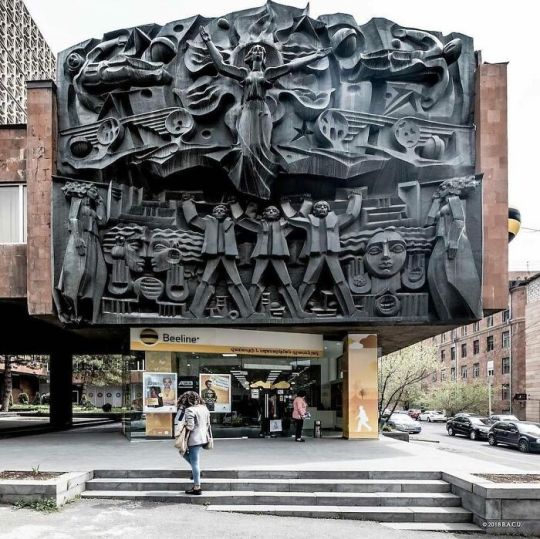
Bas Relief Sculptural Frieze On The Facade Of The Institute Of Communications. Yerevan, Armenia. (70s)
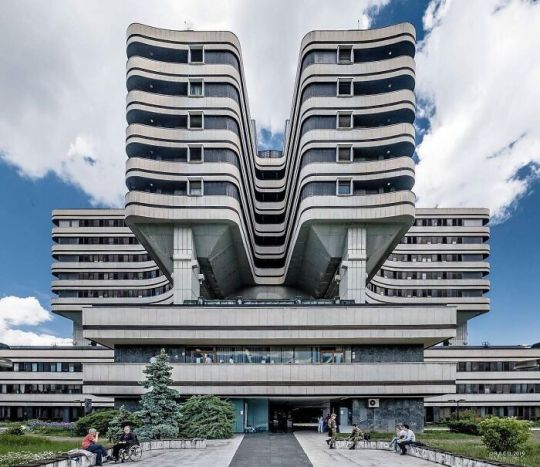
Military Medical Academy Complex, Banjica, Belgrade, Serbia, Designed In 1973, Built In 1981

House Of Fashion, Belarus, Minsk, Built In 60’s-70’s
#socialist modernism#bureau for art and urban research (bacu)#central and eastern european architectecture#architecture#heritage#history#socialism#aul residential complex#almaty#kazakhstan#yerevan#armenia#belgrade#serbia#house of fashion#belarus#minsk
61 notes
·
View notes
Text

Corvin Castle in Hunedora is one of the most beautiful and well-maintained medieval castles in Romania. It has amazing Gothic architecture and is surrounded by legends. It is said that the famous Vlad the Impaler, also known as Vlad Dracula, was imprisoned in the basement for several years.
Photography: Daniel Maté
#romania#eastern europe#europe#european#transylvania#corvin castle#vlad dracula tepes#vlad the impaler#legends#photography#gothic#architecture#scenery#aesthethic#purple aesthetic#purple#sky#historical sites#dark acamedia#aesthetic
56 notes
·
View notes
Text
Dungeon meshi has wonderful and thought out world building but the inherent creator bias still shows through sometimes in small funny ways
#dungeon meshi#ep 1#why are they eating with chopsticks when the island is mostly western in architecture/culture etc#hahaha#i always think its so funny even in like medieval isekais/webtoons#when everyone has european names#castles#dresses etc#but their school system is japanese or their meals etc#like the small stuff the author thinks is normal#calling the duke 'hyung' when there is absolutely no way that would happened at that time#its a bit endearing#i read a brothers grimm/fairy tale inspired manga#and the protag is a grimm brother who befriends hans christian andersen and subsequently calls him “an-chan”#western media has that a lot too#people eating with forks when they would use chopsticks#having meals with beef in them when its a terrain where cows wouldnt live and chicken or goat or fish would make more sense#eastern media aallllwaaysss including an age based honorifics system#western media often modeling religion along the abrahamic faiths#etc
25 notes
·
View notes
Text

Wooden Church in Podobovets, Ukraine. May 2015.
#wooden church#slavic culture#ukraine#christianity#eastern europe#may#spring#christian#european architecture#europe#church
9 notes
·
View notes
Text




5 notes
·
View notes
Text
Love that the set design for the 仙族 was just normal vaguely chinese designs they use for these fantasy historical dramas but the set design for 月族 is just Everything else . This is somehow stereotyping every other culture on the planet
#like they got european stuff and indian stuff and middle eastern looking architecture and native american type face paints#u really hit them all congrats#苍兰诀#sidney talks shit
1 note
·
View note
Text
If I see one more person hating on panel housing I’m legit gonna throw hands
#‘oh I love eastern europe but only the pretty colourful buildings not that ugly soviet shit’ SHUT UP SHUT UP SHUT UP SHUT UP#I’m not even eastern european technically I’m very very west asian but still#kruschevka my beloved#it was housing that was built quickly and was available to everyone#just because it isn’t the most beautiful architectural masterpiece doesn’t mean it’s bad or ugly#tell me you care more about aesthetics than people without telling me that
1 note
·
View note
Note
Is it just me, or Americans and Europeans depict the standard, stereotypical fairy tale setting differently?
In my opinion, Americans depict the fairy tale setting as closer to the middle ages. The Fairy Tale Setting is often just a more colorful standard, almost Tokien-like, Fantasy Setting.
Meanwhile, in actual European adaptations of said tales, the stereotypical fairy tale setting is closer to the 18th, 19th century, with the architecture being the only thing vaguely medieval
Yes, I actually do believe as such. Mind you, I cannot speak for all of Europe - mainly France and a handful of other countries I am vaguely aware of adaptations (like England or Germany).
And I believe it is due to two specific things.
A) The very "American" view of fantasy. I mean, we have been repeating and endlessly talking about it for decades now - but for Americans everytime there is something fantasy or magical it is either "standard European medieval setting" either "modern-day America". And when I say "standard European medieval setting", it is this sort of idea and phantasm American built of a vaguely European setting which mixes various countries of Western Europe (Americans only have taken recent interest in other parts of Europe, such as Northern or Eastern, due to the success of things like "Midsommar" and folk-horror and whatnot), and various eras of the Middle-Ages (the Middle-Ages were divided into three specific period quite different from each other), with a good handful of things that were not from the Middle-Ages (like the witch-hunts, for example, they were Renaissance, not medieval).
Of course it is due to a mix of general ignorance about Europe (or any part of the world that is not the USA), and of not actually caring about the original setting since their point is either to parody/reinvent the fairytales in lighter/darker ways, or prove that theses stories are "timeless" and can invent outside of any specific context (which does greatly benefit Americans since like that they can snatch anything they like). Mind you it isn't something universal - take the Disney movies for example. They might not be quite exact, but at least they made a neat effort to evoke different cultures and different eras of Europe. It is very obvious that Disney's Snow-White, Cinderella and Sleeping Beauty take place in various points of Europe's history and in different countries (Snow-White's visual influence by German furniture and statues versus the nods to French culture in Cinderella ; Sleeping Beauty's medieval illumination visual versus the more modern royal outfits of Cinderella, etc...). But it is an effort that got completely lost through time (and I think it can be shown in how, when Disney made "Enchanted", their fairytale setting was turned into a random fantasy setting outside of time and space - it did reflect quite well how people saw the fairytale world at the time).
And you know what is even worse? This "random medieval setting" you speak of is NOT even Tolkien's! Tolkien setting was not medieval in the slightest, and doesn't look like your usual "medieval setting". Just look at the visuals of the Lord of the Rings movie, compare it with some "random fairytale setting" and you see the huge gap. If anything, Tolkien's world is more of a "Dark Ages" (you know, this unknown gap between Antiquity and Middle-Ages) feeling than anything, due to mixing Ancient Scandinavia with Ancient Greece and Dark Ages Arthurian Britain.
But... when you think about it, that the Americans would create such an unclear and artificial setting for their fairytales make sense, since this is literaly what "their" fairytales were compiled as. I'll explain: when you ask an American to list you fairytales, when you see the fairytales used in the American media, it is a Frankenstein-creature. You've got the brothers Grimm and Charles Perrault and Andersen and Joseph Jacobs and nursery rhymes and some Asbjornsen and Moe fairytales... Their exposition to fairytale was by compilations of stories literary and folkloric, from different centuries and different countries, mixed together as one. As such... it makes sense for them a fairytale world would look like a pile of mashed-potatoes in terms of history-geography. Because they have to build a world that mix all of these stuff as one... (Plus something-something about the Americans being fascinated by the Middle-Ages because they did not have one?)
B) The Europeans are very "conscious" about fairytales. I will almost say "self-conscious".
Europeans are bound to always test and try various time-eras, fashions and context for fairytales due to a set of three reasons.
1) We have centuries of "traditional medieval imagery" that the Americans lack. Since our fairytales were published between the 17th and 19th centuries - some even by the 20th - Europe already underwent the whole "Random medieval setting" phase through popular imagery and children book and whatnot. America just begun it from the 19th/20th century - we have been at it for two, three more centuries. So today we are moving forward (and in general, while there are many aspects Europe is "late" compared to the USA, in many other ways Europe is "in advanced" compared to the USA, just because of how "young" this country's history is).
2) We are aware of the context of our own fairytales. Due to the language barrier, for example, we know every time a story comes from somewhere else. We have folktales compilations classified by countries and regions. And everytime we bring up a specif set of fairytales, we bring up the life, job and time-era of the fairytale tellers (Perrault, Grimm, Andersen, which are our "national treasures" - unlike Americans for which they're just "yeah little foreign guys we see in the distance"). As such when the French talk about Cinderella or Puss in Boots, the very images of Renaissance are brought up, the same way a German will immediately think of the Napoleonian wars and the post-Napoleon era when thinking of the Grimms - even though the fairytales are supposed to be in the "pseudo-medieval" setting.
3) Europe has been flooded and dominated by the American media when it comes to fairytales. As such we are very aware and accustomed to the "pseudo-medieval" setting popularized by America, and when Europeans try to do their own thing, they usually try to set themselves apart from it, due to knowing how cliche and Americanized this already is. Something very similar happened with French fantasy literature for example - French fantasy books are always trying to stand away from the "cliche American fantasy book" precisely because we are flooded with them and they form the bulk of our fantasy literature, so as such we are very aware of the flaws and stereotypes and expectations coming with the genre... It also doesn't help that most of the castles and "old-fashioned" architecture around Europe is not medieval per se (or that the medieval architecture is for example very impractical when it comes to filming movies), and we have much more Renaissance buildings and the like. In France for example most castles are Renaissance-era. "Real" medieval castles (as in medieval castles not "remade" by Renaissance or modern designers) are much rarer, or not as well preserved as the Renaissance ones.
Anyway this post got way bigger than I intended, but if you ask me some of my thoughts, here they are - mind you they are just my thoughts and I can't speak for every European. I am just one little eye and one little mind in a big big world... But that's the things I am led to believe.
#fairytale adaptation#ask#fairy tales#fairytales#american fairytales#disney fairytales#fairytale cinema#fairytale adaptations
38 notes
·
View notes
Note
okay i know that you said you're not the greatest history buff, but i realy wanted to know your take on the Safavid kingdom as a representation of a middle eastern community..? if you've read enough manhwas you probably have seen some stupid stereotypes and it realy sucks. god i feel like i'm bothering you asking this i mean we don't know much about safavid .. you don't have to answer this :D
of course! i'll try my best to speak about it! the floor is also open to anyone who has their own additions!
So. We all know that ASM borrows inspiration from existing territories and conflict from the 1700s all the way up to the late 1800s, right? Well get ready for this.
If we use this same research model, we'll come to find that the Safavid Dynasty also existed in Iran back in the 16th century. Which means we have a direct reference point we can compare the (manhwa) Safavid Kingdom to! (just remember to take it with a few grains of salt. We're dealing with 400+ years of history here!)

In my humble opinion (as someone who isn't part of the middle-eastern community btw), I feel like ASM does a pretty fair job at representing the middle east via Safavid/Pasha Family. The biggest hurdle just comes from the fact we haven't seen much of them yet.
The first thing I noticed was the architecture. During Halima's trip back home to Safavid we get to see ORKA's depiction of the Kingdom. As you can see below, the inspiration behind the Bahjat's Palace is pretty directly linked to the Meidan Emam in Isfahan, a royal mosque from the Safavid Era!

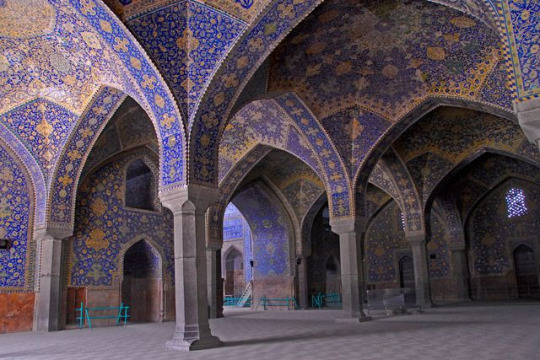



Unfortunately, the establishing shot of the city isn't as easy to compare, with the introduction of modern architecture. But if we look at Yazd, an untouched city in Iran, we can see the traces of inspiration with just a few minor discrepancies: minaret, domed mosques, earthen town houses.
We also get these small fleeting moments that really make the characters feel like they're from another country. For example, Nasir, Ali's escort can be seen wielding a curved sword as opposed to a European broadsword. Later, Nora mentions that it is a shamshir, a type of Persian scimitar.


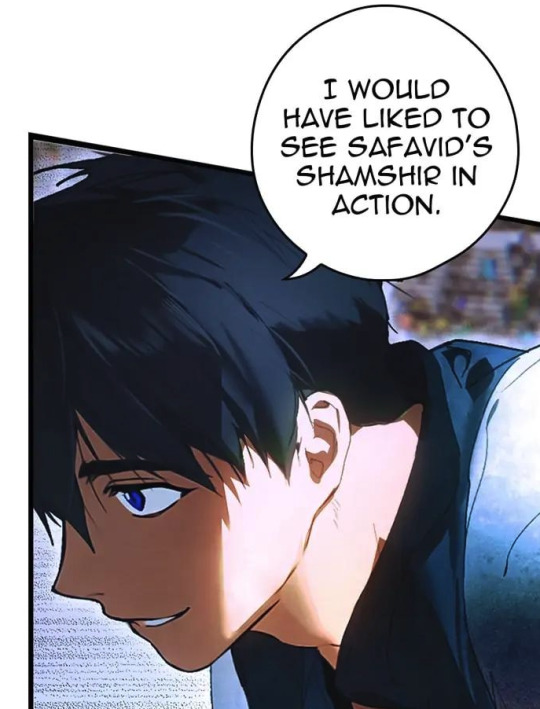
even these small details really make for great world building. Honestly, I'd love to see these props make a comeback in future scenes. Like can you imagine seeing one of the rugs Ali brought in the Neuschwanstein Castle?
Now to finally get to the part you've probably been waiting for. The clothes.


Unfortunately, I'm not as well versed in royal fashion in the Middle East so I had a hard time identified the style of dress.
When we compare the real Shahs of the Safavid Dynasty, we'll see that their fashion of choice changed greatly over the course of the ruling. I couldn't pinpoint exactly who, when or which specific culture ORKA is referencing here. But we do see some elements from Tahmasp I (feathered turban, ornate belt, embroidered textiles). Please correct me if I've made any errors here. I'm totally not confident in my Middle Eastern fashion history.
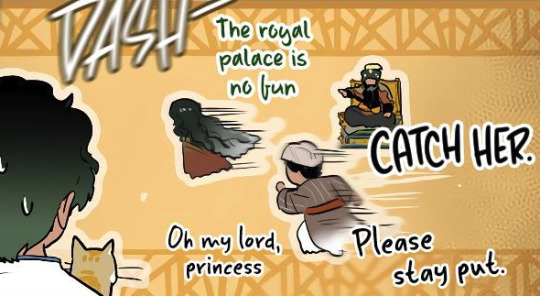
But above all else, I really just enjoy how the Pasha family is written and designed. I think we've seen stereotypes in all forms of media where middle easterners are portrayed... not so well.
In ASM, they're just the Pashas. As a foreign kingdom, they pose a threat against the Empire, but they're not evil. The King seems to be as tired with Halima's bullshit as the Empress is with Theo. Even Nasir has his own occasional dialogue, exasperated by Ali's behavior. And if you've read the same comics I have, we're all too familiar with the "dangerous and stoic middle-easterner" stereotype.
IMO, we've seen "foreign" characters in manga/manhwa that are usually boiled down to one of three types: the socially insensitive clowns/perverts, the murderer, or the alien that somehow has white skin and hair. but I personally find it a breath of fresh air how ASM leans full into the concept of darker skinned characters with dark hair and actual rounded personalities.
This shouldn't be such a high bar to reach, but ORKA has one again reached it.
#a stepmother's marchen#the fantasie of a stepmother#ali pasha#halime pasha#stepyapping#askstepmarchen
22 notes
·
View notes
Text

Ludwigstein in the Mon Repos Park,Vyborg (1900s)
Photography by Sergey Prokudin-Gorskiy (1863-1944)
#Россия#Russia#vintage#photography#Сергей Прокудин-Горский#Sergey Prokudin-Gorskiy#русский фотограф#russian photographer#photographer#Выборг#Vyborg#Viborg#Viipuri#Wiburg#russian#Монрепо#Mon Repos Park#Ludwigstein#Eastern Europe#photo#architecture#nature#Europe#photos#beauty#park#european#vintage photography#1900s#20th century
22 notes
·
View notes
Photo

The National “Khabar” Television Studios And Administrative Offices. Almaty, Kazakhstan, Built In 1983
Revitalizing The Heritage Of Socialist Modernism: BACU’s Online Initiative To Protect Central And Eastern European Architecture
Preserving the monumental yet decaying structures of central and eastern Europe erected between 1955-91 is the mission of the online initiative, Socialist Modernism, created by the Bureau for Art and Urban Research (BACU). With an aim to revitalize this heritage, BACU believes in the significance of these elements which managed to defy some of the ideological requirements of their time, giving the urban space a distinct flavor characteristic of the socialist period.
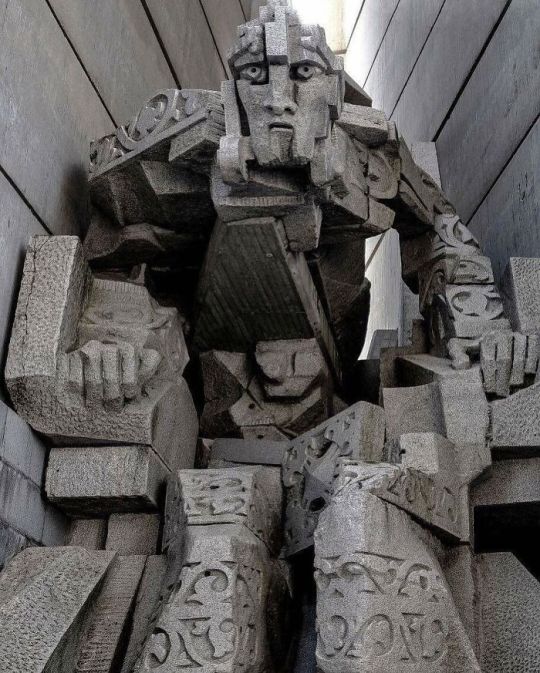
The Monument To 1300 Years Of Bulgaria

Housing Building On Bobur Street. Tashkent, Uzbekistan Built In 1974

Former Ministry Of Transportation, (Now: Bank Of Georgia) Tbilisi, Georgia, Built In 1974
#socialist modernism#bureau for art and urban research (bacu)#heritage#central and eastern european architecture#architecture#history#socialism#national khabar television studios#almaty#kazakhstan#monument to 1300 years#bulgaria#housing building on bobur street#tashkent#uzbekistan#tbilisi#georgia
26 notes
·
View notes